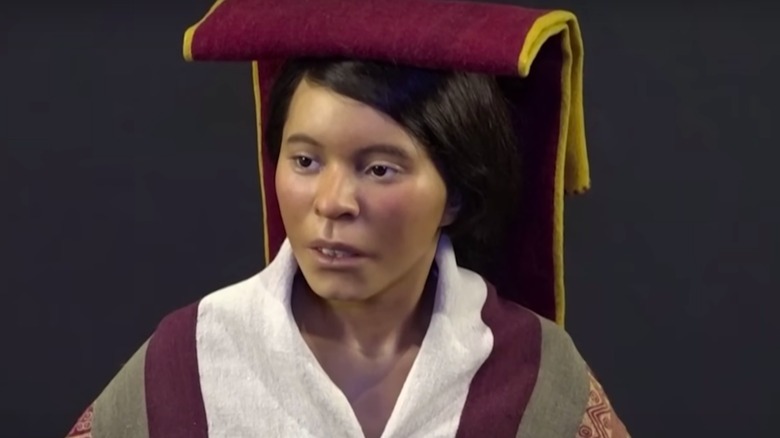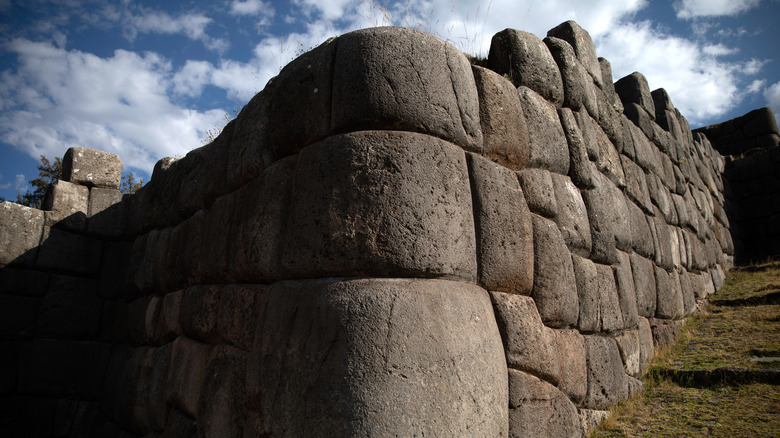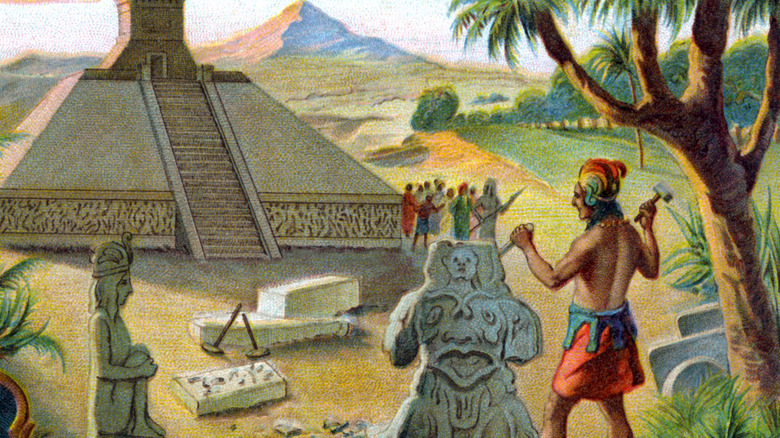What We Know About The Ice Maiden Of The Andes
The first thing they saw was feathers peeking out of the snow — it turned out to be a ceremonial headdress — and they knew they'd discovered a sacrificial site (per The New York Times). It was September 1995, and U.S. archeologist Johan Reinhard and Peruvian mountaineer Miguel Zarate were near the summit of Mount Ampato, a volcano in the Andes Mountains of Peru, more than 20,000 feet above sea level. According to the Chicago Tribune, they were on an expedition related to cultural artifacts from the Inca Empire. Reinhard stared at the mummified face of a young girl who died 500 years earlier. "It looks like it has dried out," he commented, per his book, "The Ice Maiden: Inca Mummies, Mountain Gods, and Sacred Sites in the Andes." Even so, Reinhard knew the discovery of the well-preserved remains of what would become known as the Ice Maiden of the Andes was huge.
Soon, he began the treacherous job of carrying the nearly 100-pound partially frozen body down the mountain. Zarate chopped through the ice to create some makeshift stairs as they made their precarious descent. Nearly 30 years later, Reinhard had the chance to see what the young teenage girl's face looked like when Swedish sculptor Oscar Nilsson and a team of Peruvian and Polish scientists finished a silicone reconstruction of the ice maiden's head, according to the Associated Press. "I thought I'd never know what her face looked like when she was alive," Reinhard told the news organization.
Sacrificed to the gods
According to CNN, she goes by many names: Juanita, the Ice Maiden of the Andes, and the Lady of Ampato. She was a young teen between 13 and 15 when — perhaps willingly — she trekked up Mount Ampato with Incan priests sometime between A.D. 1440 and 1450, per the AP. She was dressed in royal garments, not necessarily because of her station in Incan society, but because she was going to be sacrificed to the gods, according to "The Ice Maiden: Inca Mummies, Mountain Gods, and Sacred Sites in the Andes." It was likely the teen had chewed coca leaves or drank the powerful hallucinogen ayahuasca or perhaps drank some sort of alcoholic concoction — researchers found traces of vomit on her clothing — to calm her before the priests killed her by smashing in her skull using a ceremonial club (per the BBC and The Baltimore Sun).
They left her there, surrounded by gold, silver, and shell figurines, pottery, food, and other items, according to Expedition Magazine. "In Inca beliefs, such a sacrifice brought honor on the parents and an afterlife of bliss for the victim," Reinhard recounted in the article. "The child would become deified and worshiped for generations as the villagers' intermediary with the gods."
She died in the Incan heyday
The reconstructed features of the Ice Maiden show a teenage girl with prominent cheekbones, dark eyes, glossy black hair, and tanned skin. She would have died in the period of Incan society's heyday, which lasted from about A.D. 1400 to 1533. In the end, the Spanish invaded their lands, bringing European diseases for which the Inca had no immunity, wiping out 75% of the population, per the Chicago Tribune.
At the time Johan Reinhard and Miguel Zarate found the Ice Maiden, she was considered one of the most biologically intact Incan bodies from that period. That changed when Reinhart recovered even better-preserved mummies in 1999, per an AP story from that year. The Ice Maiden traveled to both the United States and Japan before her return to Peru. Her well-preserved remains, garments, and the sacrifice site have been a boon for researchers in learning more about her time and place. "These findings have helped us better understand her life and the Inca culture," Reinhard told the Associated Press in October 2023. "Now we can see what she really looked like, which makes her even more alive."


